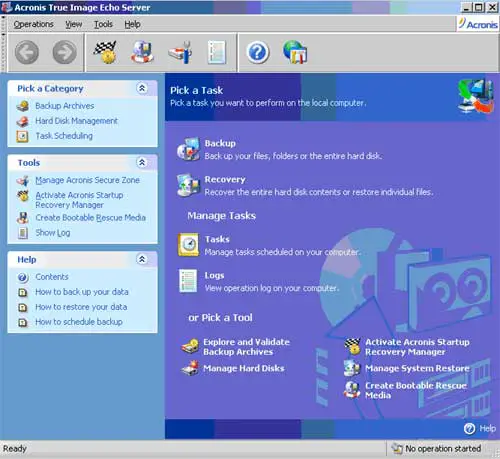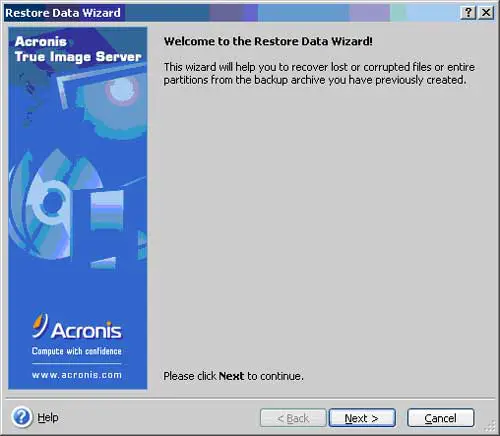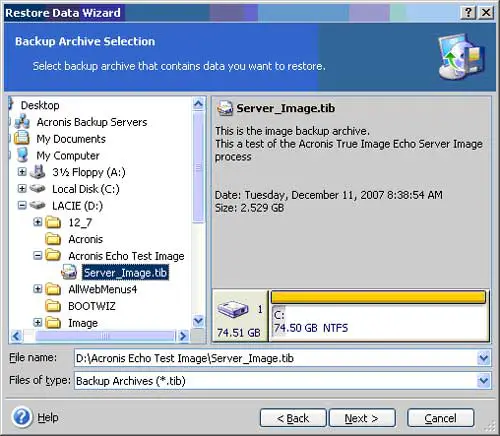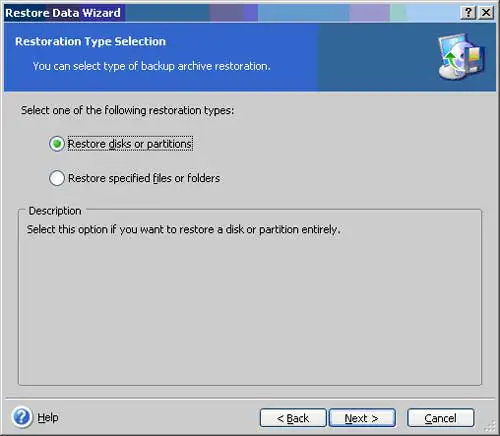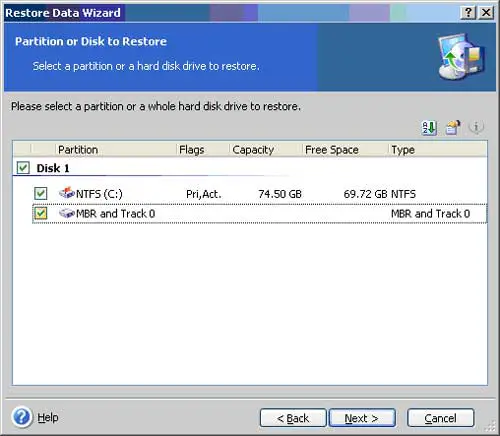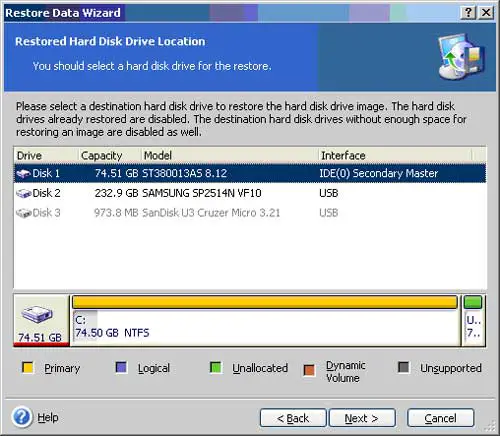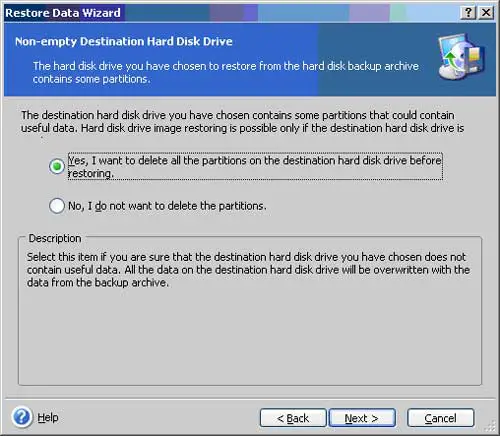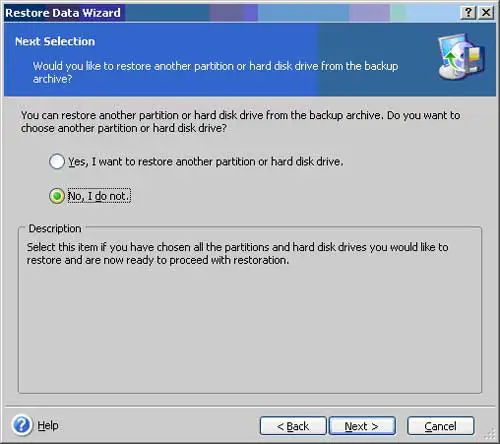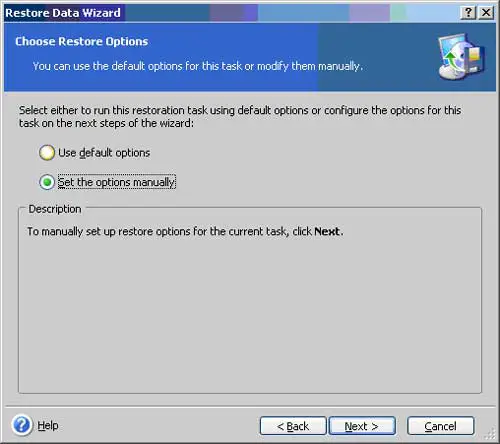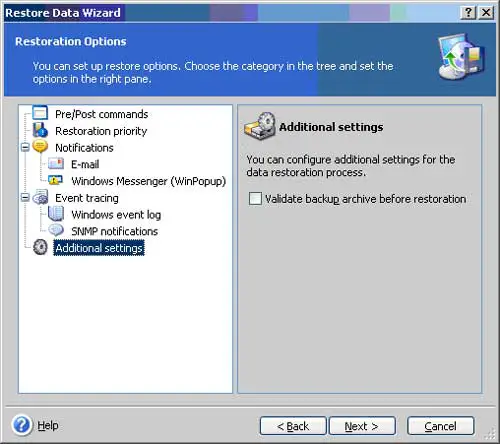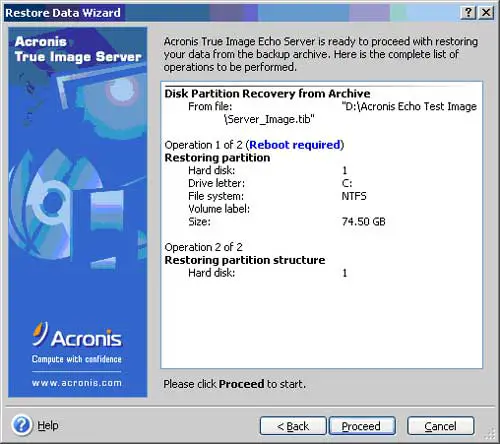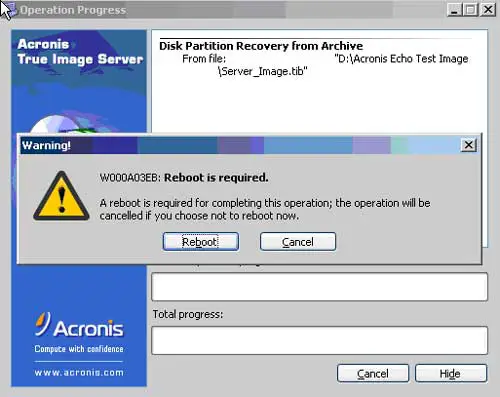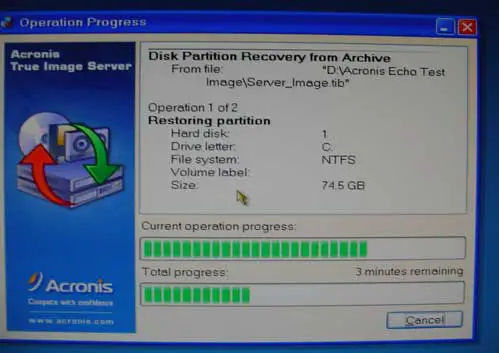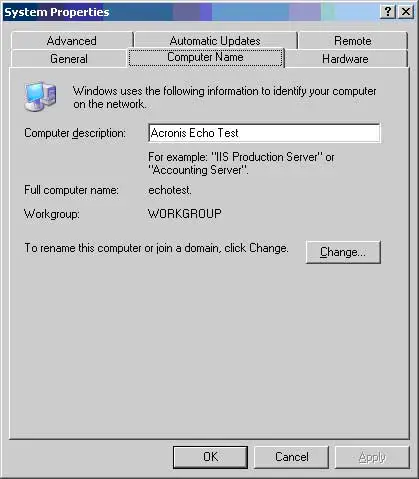Disclaimer: This post may contain affiliate links, meaning we get a small commission if you make a purchase through our links, at no cost to you. For more information, please visit our Disclaimer Page.
The Acronis Backup for Windows Server is a perfect solution for protection of all data stored on Windows server, including the Server Operating System. Acronis Backup & Recover 10 Server for Windows simplifies and automates the data recovery process, even when the need arises to recover to dissimilar hardwarePLATFORMS
New Version is Released
Acronis Backup for Windows Server is released with new strategies geared towards virtual, cloud and server unification, the new version offers an outstanding range of new features, as well as hundreds of useful enhancements.
In the previous review and tutorial of the Acronis True Image Server, a full image of a Windows Server 2003 was created. In this tutorial, or walkthrough, I will put the product to the test and see if it will restore the entire image. It is best to test the restore of an image before a disaster happens. This should take a matter of minutes to restore. This is a review of the Acronis Server restore process.
The first step is to select theRECOVERY OPTION
The following screenshot welcomes us to the Restore Data Wizard. This wizard will help you to recover lost or corrupted files or entire partitions from the backup archive you have previously created.
The following screen lets you choose the backup archive to restore. The Acronis Server found the image on the Lacie 250 gigabyte external hard drive with no problem.
The following screen shows that you can restore entire disks or partitions or just restore specified files or folders. Choose to restore disks or partitions to restore the entire Echo Server image file.
The following screen lets you choose the partition or disk to restore.
Then we need to choose the location that the Acronis Echo image will be restored. I chose to put the image on Disk 1 where it came from.
The following Acronis True Image Echo Screenshot warns you that there are some partitions on the selected restore drive. It tells you that the destination hard disk drive you have chosen contains some partitions that could contain useful data. Hard disk drive image restoring is possible only if the destination hard disk drive is empty. So naturally, I chose to delete all the existing partitions on the destination hard drive before restoring.
The following screen allows you to restore another partition or hard disk drive from the backup archive. I chose not to restore another partition and clicked next.
The following step allows you to use the default options or set the options manually. I wanted to see what the options were so I chose to set the options manually.
Here is where you can set up email notifications, logging options and even validate the archive before restoring.
The following screenshot shows that the Acronis True Image Server is ready to proceed with restoring the data from the backup archive. Here is the complete list of operations that will be performed. So naturally, I saved this page and smacked the proceed button.
Then the Acronis True Image Server told me that a reboot was required. It was an expected warning because I am working on the drive that is to be restored. So I smacked the reboot button.
This is a shot of the Acronis True Image Server in its low level mode restoring the image.
Sure enough, about 4 minutes later the Windows Server rebooted to the login screen allowed me to login successfully. I have never seen a product restore a server so fast and so easy.
The Acronis True Image server performed a quick and flawless restore of the entire Windows Server 2003 installation. For that reason, the Acronis Server gets an honorable Brontobyte on a scale of Bytes to Brontobytes. It is a truly impressive and highly recommended program to have in your toolbox.
Of course, the Acronis server backup software also allows you to perform reliable, scheduled Full, Incremental or differential backups of your Windows servers.
The Acronis Backup for Windows Server creates an exact image of your Windows server including the operating system, applications, and configurations. This remote backup and recovery utility can also back up mission-critical databases. Anyway, both your machine and special files or folders will be successfully restored in case of system failure. What is important to an IT administrator, backup procedures run without interrupting server operations. See our review of the Acronis Backup Server for Windows.

